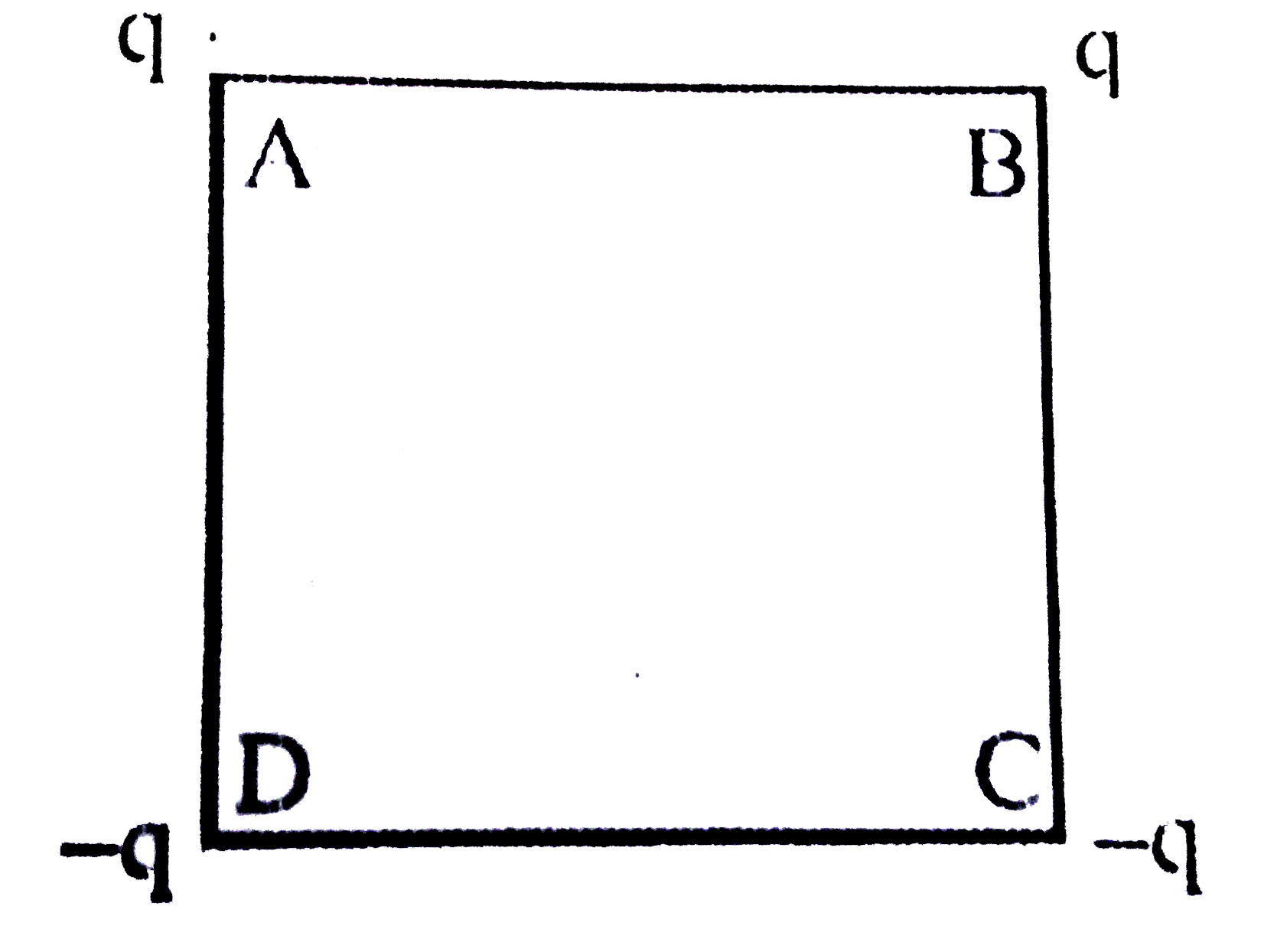At a certain distance from a point charge, the field intensity is 500V/m and the potential is −3000V. The distance to the charge and the magnitude of the charge respectively are
6 m
12 m
36 m
144 m
The correct Answer is:A
To solve the problem, we need to find the distance from the point charge and the magnitude of the charge using the given electric field intensity and potential.
1. Understand the formulas:
- The electric field intensity (E) due to a point charge is given by:
E=kQR2
- The electric potential (V) due to a point charge is given by:
V=kQR
where k is Coulomb's constant, Q is the charge, and R is the distance from the charge.
2. Given values:
- Electric field intensity, E=500V/m
- Electric potential, V=−3000V
3. Set up the equations:
- From the potential equation:
V=kQR⟹kQ=VR
- From the electric field equation:
E=kQR2⟹kQ=ER2
4. Equate the two expressions for kQ:
VR=ER2
5. Rearranging the equation:
R=VE
6. Substituting the known values:
R=−3000V500V/m=−6m
Since distance cannot be negative, we take the absolute value:
R=6m
7. Now, find the magnitude of the charge Q:
- Substitute R back into one of the original equations. Using the potential equation:
V=kQR⟹kQ=VR
- Substitute V and R:
kQ=(−3000V)(6m)=−18000V m
8. Calculate Q:
- Using k≈8.99×109N m2/C2:
Q=−18000k=−180008.99×109≈−2.00×10−6C
- Therefore, the magnitude of the charge is:
|Q|≈2.00μC
Final Answers:
- Distance to the charge R: 6m
- Magnitude of the charge |Q|: 2.00μC
- The electric field intensity (E) due to a point charge is given by:
E=kQR2
- The electric potential (V) due to a point charge is given by:
V=kQR
where k is Coulomb's constant, Q is the charge, and R is the distance from the charge.
- Electric field intensity, E=500V/m
- Electric potential, V=−3000V
- From the potential equation:
V=kQR⟹kQ=VR
- From the electric field equation:
E=kQR2⟹kQ=ER2
VR=ER2
R=VE
R=−3000V500V/m=−6m
Since distance cannot be negative, we take the absolute value:
R=6m
- Substitute R back into one of the original equations. Using the potential equation:
V=kQR⟹kQ=VR
- Substitute V and R:
kQ=(−3000V)(6m)=−18000V m
- Using k≈8.99×109N m2/C2:
Q=−18000k=−180008.99×109≈−2.00×10−6C
- Therefore, the magnitude of the charge is:
|Q|≈2.00μC
- Distance to the charge R: 6m
- Magnitude of the charge |Q|: 2.00μC
Topper's Solved these Questions
- ELECTROSTATIC POTENTIAL AND CAPACITORSBOOK - DC PANDEY ENGLISHCHAPTER - ELECTROSTATIC POTENTIAL AND CAPACITORSEXERCISE - (B) Chapter exercises
17 Videos
- ELECTROSTATIC POTENTIAL AND CAPACITORSBOOK - DC PANDEY ENGLISHCHAPTER - ELECTROSTATIC POTENTIAL AND CAPACITORSEXERCISE - (C) Chapter exercises
50 Videos
- ELECTROSTATIC POTENTIAL AND CAPACITORSBOOK - DC PANDEY ENGLISHCHAPTER - ELECTROSTATIC POTENTIAL AND CAPACITORSEXERCISE - Check point 2.5
20 Videos
- ELECTROMAGNETIC WAVESBOOK - DC PANDEY ENGLISHCHAPTER - ELECTROMAGNETIC WAVESEXERCISE - Sec C
22 Videos
- ELECTROSTATICSBOOK - DC PANDEY ENGLISHCHAPTER - ELECTROSTATICSEXERCISE - Medical entrances gallery
37 Videos
Similar Questions
At a certain distance from a point charge, the field intensity is 500V/m and the potentil is −3000V. The distance to the charge and the magnitude of the charge respectively are
View SolutionA given charge is situated at a certain distance from an electric dipole in the end-on position experiences a force F If the distance of the charge is doubled, the force acting on the charge will be
View Solution
Knowledge Check
Electric field intensity at a point B due to a point charge Q kept at point A is 24NC−1, and electric potential at B due to the same charge is 12JC−1. Calculate the distance AB and magnitude of charge.
A10−6CB10−7CC10−10CD10−9C
At s point due to a point charge, the values of electric field intensity and potential are 32NC−1 and 16JC−1, respectively. Calculate the
a. magnitude of the charge, and
b. distance of the charge from the point of observation.
View SolutionThe electric potential at a certain distance from a point charge is 600 V and the electric field is 200NC−1. Which of the following statements will be true?
View SolutionAt distance 'r' from a point charge, the ratio UV2 (where 'U' is energy density and 'V' is potential) is best respresented by :
View SolutionA sphere of radius R carries charge such that its volume charge density is proportional to the square of the distance from the centre. What is the ratio of the magnitude of the electric field at a distance 2 R from the centre to the magnitude of the electric field at a distance of R/2 from the centre?
View SolutionCharges are placed on the vertices of a square as shown. Let E r be the electric field and V the potential at the centre. If the charges on A and B are interchanged with those on D and C respectively, then :-

View SolutionPlot a graph comparing the variation of potential ‘V’ and electric field ‘E’ due to a point charge ‘Q’ as a function of distance r from point charge
(ii) Find the ratio of the potential differences that must be applied across the parallel and the series combination of two identical capacitors so that the energy stored, in the two cases, becomes the same.
View SolutionOn moving a charge of 2C from a point A where potential is +12V to a point B where potential is -12 V, the work done is -
View Solution
